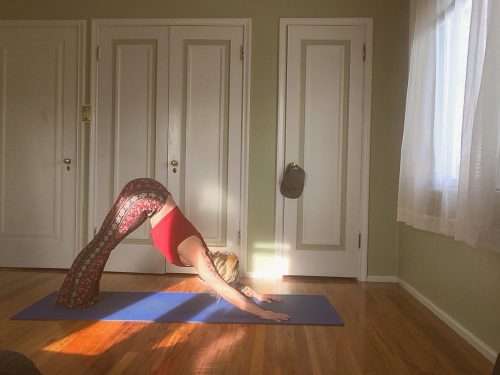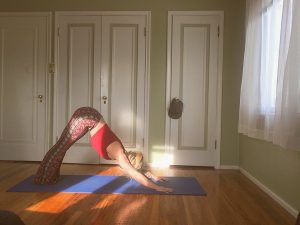
We’ve all been there, working with a client who claims they’ve never been able to touch their toes. We’ve all done the internal wince, imagining the discomfort and pain the client surely experiences daily. This interaction followed by the comment, “But it’s not a big deal, right? I mean how important is flexibility really?”
Very! It is so very important, and I’ll give you some major points to share with your clients as to why.
As trainers, it is obvious why maintaining healthy ROM is important, but for our clients, it is not so apparent.
Common aversion tactics to flexibility training:
- “It’s boring”
- “It’s time-consuming”
- “It won’t help me improve (insert activity/sport of choice)”
- “It’s uncomfortable”
- “I don’t mind that I am not flexible”
- “I’m not old, why do I need to work on this now”
- “I want to be strong, I don’t care if I can touch my toes”
The list literally goes on and on. If there is an excuse, I have heard it and I’m sure all my fellow trainers have as well. For some reason, of all wellness-related activities, flexibility training is the most difficult to convince of its importance.
Many clients are too focused on the weight they want to lose, the seconds they want to shave off their mile, the increase of their deadlift and the definition of their musculature. The time they have allotted to spend on fitness is not to be wasted on something as “inconsequential” as flexibility training.
However, I have noticed that when I explain the reasons why it is so important to their overall health and their fitness goals, the client’s motivation for flexibility increases. Along with this, explaining how the “why’s” work, gives clients, even more, drive to try.
The Whys and Hows of Flexibility Training
1: Improved performance and ease of daily activities.
Adequate ROM and flexibility are needed in all aspects of daily life. It’s needed to look behind as a car is reversed, when bending down to tie a shoe, to easily reach into a high shelf, to reach an itch on the back.
2: Lack of adequate ROM/flexibility leads to incorrect postural habits.
When the muscles don’t have their proper ROM they begin to compensate in any way they can to maintain an upright posture. This leads to chronic back and shoulder pain, tension headaches from tight muscles in the back, compromised joint health, higher risk for shoulder and back injuries and decreased performance in physical activity.
3: Improved performance of aerobic and strength training activities.

When the muscles have proper flexibility it becomes easier to move through their entire ROM. When a muscle can move easily through its ROM, all activity becomes easier. With less restriction in the movement, there is more room to challenge and improve that activity.
Strength training in the shoulders for example. If someone cannot easily bring both their arms overhead in proper musculature alignment, then they either will not be able to train in an overhead press at all, or they will be using incorrect muscle activation to compensate. Both of these not being a viable option.
Imagine the same scenario except the client has adequate flexibility. With full ROM accessible to them, the entire muscle will be recruited properly, meaning better development of strength and the ever desired muscle definition. This means healthier and happier joints and connective tissues as well.
4: Maintaining proper flexibility and ROM will reduce the risk of injury.
When the muscles are pliable and have access to full ROM, then the chance of injury is minimized.
5: Maintaining proper flexibility and ROM will mean a greater chance of independence in later years.
A large contributor to loss of independence is the inability to perform daily tasks. Dressing oneself, driving, sitting down and getting up. With maintained flexibility and ROM this contributor is taken out of the mix. Loss or lack of ROM will be one less thing inhibiting an individual from a long life of self-sufficiency and independence.
Selling important fitness foundations like flexibility to clients can be tricky, but it’s part of a multidimensional approach to health and wellness. Education is one way to empower your clients to care about their range of motion. Another way is to show them. Improve client flexibility with this yoga series. It’s enjoyable and effective. Try it yourself and then share it with your clients.
[info type=”facebook”]Join the conversation on the NFPT Facebook Community Group.[/info]
Reference
Tyagi, AnupamaCohen, Marc. “Yoga And Hypertension: A Systematic Review.” Alternative Therapies In Health & Medicine 20.2 (2014): 32-59. Alt HealthWatch. Web. 8 May 2014.






